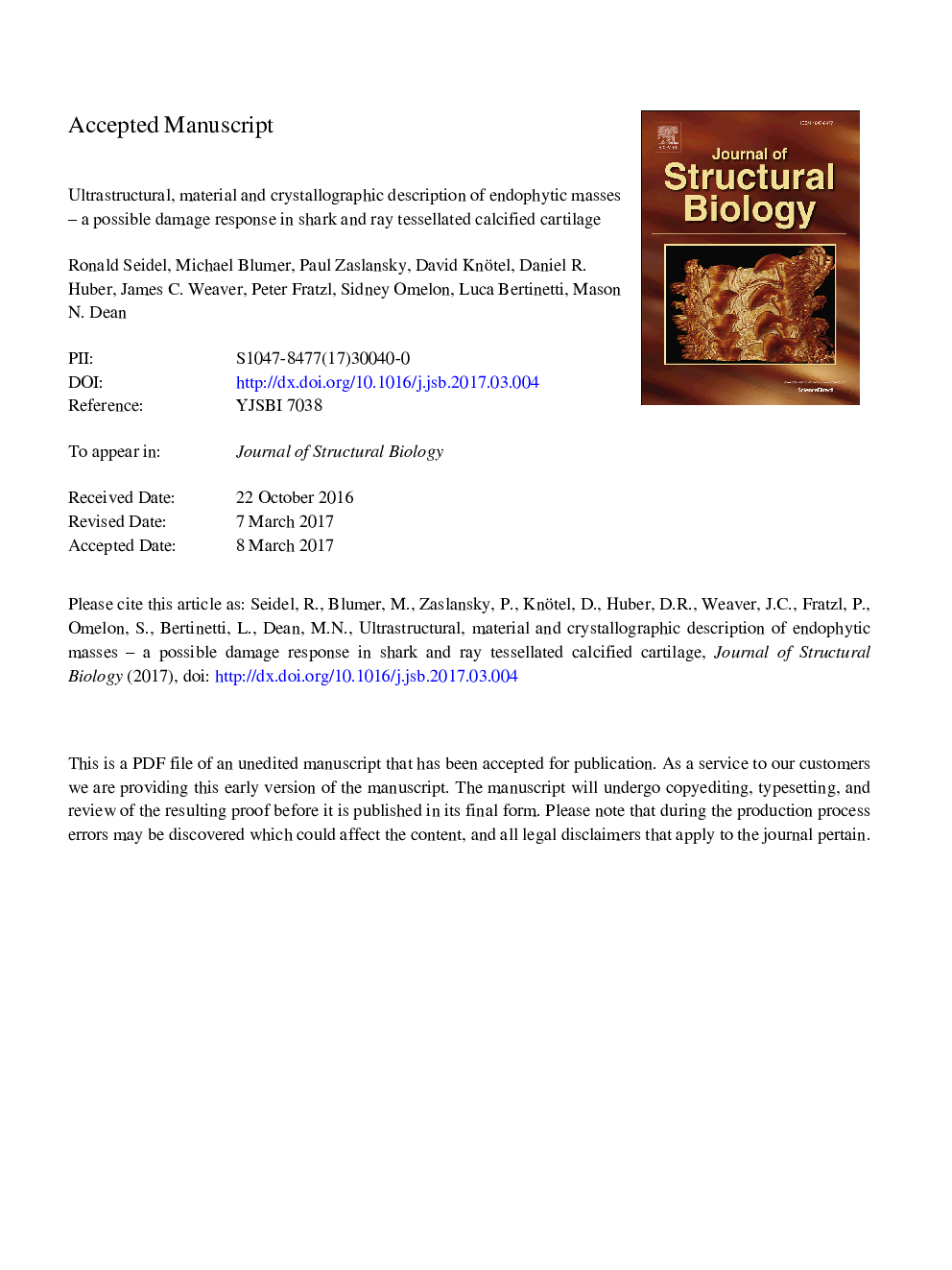| کد مقاله | کد نشریه | سال انتشار | مقاله انگلیسی | نسخه تمام متن |
|---|---|---|---|---|
| 5591637 | 1404987 | 2017 | 37 صفحه PDF | دانلود رایگان |
عنوان انگلیسی مقاله ISI
Ultrastructural, material and crystallographic description of endophytic masses - A possible damage response in shark and ray tessellated calcified cartilage
ترجمه فارسی عنوان
شرح فوق العاده ساختاری، مواد و کریستالوگرافی توده های اندوفیتی - یک پاسخ احتمالی آسیب در غضروف کلسفید شده کوسه و پرتو
دانلود مقاله + سفارش ترجمه
دانلود مقاله ISI انگلیسی
رایگان برای ایرانیان
کلمات کلیدی
موضوعات مرتبط
علوم زیستی و بیوفناوری
بیوشیمی، ژنتیک و زیست شناسی مولکولی
زیست شناسی مولکولی
چکیده انگلیسی
The cartilaginous endoskeletons of elasmobranchs (sharks and rays) are reinforced superficially by minute, mineralized tiles, called tesserae. Unlike the bony skeletons of other vertebrates, elasmobranch skeletons have limited healing capability and their tissues' mechanisms for avoiding damage or managing it when it does occur are largely unknown. Here we describe an aberrant type of mineralized elasmobranch skeletal tissue called endophytic masses (EPMs), which grow into the uncalcified cartilage of the skeleton, but exhibit a strikingly different morphology compared to tesserae and other elasmobranch calcified tissues. We use materials and biological tissue characterization techniques, including computed tomography, electron and light microscopy, X-ray and Raman spectroscopy and histology to characterize the morphology, ultrastructure and chemical composition of tesserae-associated EPMs in different elasmobranch species. EPMs appear to develop between and in intimate association with tesserae, but lack the lines of periodic growth and varying mineral density characteristic of tesserae. EPMs are mineral-dominated (high mineral and low organic content), comprised of birefringent bundles of large calcium phosphate crystals (likely brushite) aligned end to end in long strings. Both tesserae and EPMs appear to develop in a type-2 collagen-based matrix, but in contrast to tesserae, all chondrocytes embedded or in contact with EPMs are dead and mineralized. The differences outlined between EPMs and tesserae demonstrate them to be distinct tissues. We discuss several possible reasons for EPM development, including tissue reinforcement, repair, and disruptions of mineralization processes, within the context of elasmobranch skeletal biology as well as damage responses of other vertebrate mineralized tissues.
ناشر
Database: Elsevier - ScienceDirect (ساینس دایرکت)
Journal: Journal of Structural Biology - Volume 198, Issue 1, April 2017, Pages 5-18
Journal: Journal of Structural Biology - Volume 198, Issue 1, April 2017, Pages 5-18
نویسندگان
Ronald Seidel, Michael Blumer, Paul Zaslansky, David Knötel, Daniel R. Huber, James C. Weaver, Peter Fratzl, Sidney Omelon, Luca Bertinetti, Mason N. Dean,
